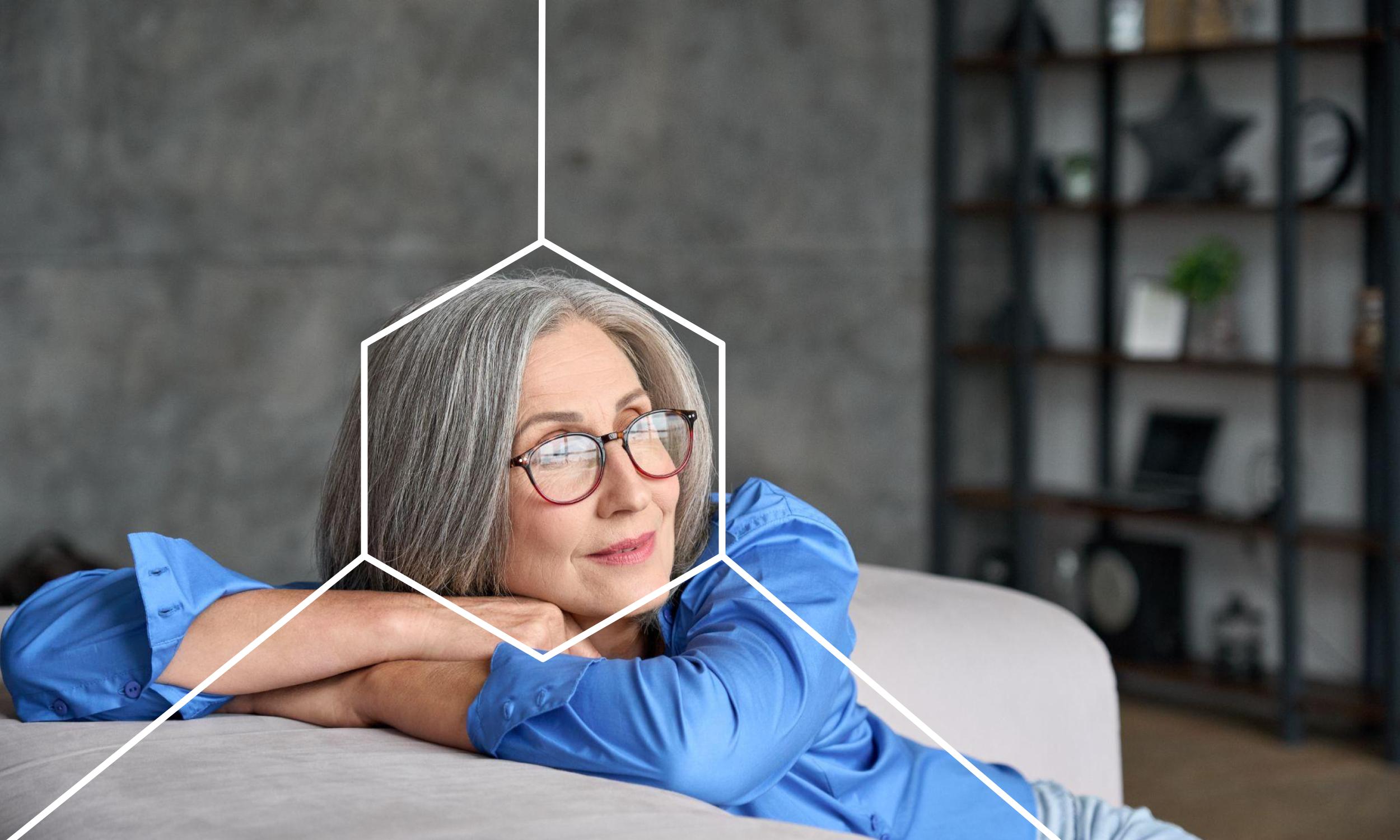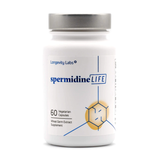
We all have to deal with the dreaded side-effects of aging at some point. Knowing when to expect the signs can help you better combat aging. Today, we will be going over when aging occurs, at what age does your face change most, what the signs of aging are, at what age does aging accelerate, and how you can to reverse aging.
At What Age Is Your Face Most Likely To Change?
One of, if not the most dreaded, side effects of aging is the changes we see in our face. After all, looking in the mirror is one of the first things you do in the morning. Discovering a new wrinkle or smile line can be a day ruiner. But at what age do we start noticing changes and when is it too early?
As far as the female or male aging timeline, the biggest changes typically occur when people are in their 40s and 50s. However, it’s not unlikely to notice changes in your mid to late-30s, as well. Some first signs of age of aging are droopy skin, smile lines, and wrinkles. These changes can be jarring, but natural.
Can Age Affect the Shape of Your Face?
When we are young, there’s a layer of fat underneath our skin giving us that smooth and youthful appearance. Unfortunately as we age, that fat begins to loosen leading to a sagging jawline, deeper folds, sunken features, and less fullness.
Collagen and elastin help keep the skin tight and hydrated. The older we get the more difficult it is for our face to produce these components. This leads to skin thinning, loss of elasticity and dryness. Long story short, aging takes a toll on the face and body, but there are things we can do to fight back.
How Can I Make My Face Look More Youthful?
There are a few ways to minimize the visual signs of aging, and even reverse some of the noticeable changes over time. Now, getting older gracefully is not easy. You will have to take your skincare routine seriously if you want to see results. If you’re looking to mitigate the appearance of aging, here are some daily tips to consider:
- Use a facial moisturizer
- Apply sunscreen to protect your skin from sun damage
- Remove makeup gently
- Eat Vitamin-C rich foods
- Drink plenty of water
In order to achieve long term results, you need to implement healthy lifestyle changes into your life gradually. There is no magic product that can guarantee overnight results, slowing down the appearance of aging takes time and commitment.
Around What Age Does Your Body Begin Declining?
If you’re wanting to fight back against aging, the best course of action is preventative care. This is because signs of aging can happen rapidly and unexpectedly. Adopting a healthy skincare routine as soon as possible will lead to better skin as you age.
Both men and women begin to see a decline in their physical health in their 50s. This can mean a decline in speed, endurance, and energy. You can combat this by staying active. At least 30 minutes of activity every day can help put off the dreaded effects of aging.
What Are the Seven Signs Associated With Skin Aging?
Aging is inevitable and the signs vary from person to person. Genetics and outside factors all play a big role in determining how quickly someone will age. Experts agree that there are seven universal signs of aging that people will experience as they get older:
- Fine lines and wrinkles
- Dullness of skin
- Uneven skin tone
- Dry skin
- Blotchiness and age spots
- Rough skin texture
- Visible pores
Again, there are many different factors that go into aging. If you feel that you’re experiencing rapid signs of aging too early, speak with your doctor. This can be an indication of illness or disease.
Age Related Skin Issues To Expect And Prepare For
Possibly the greatest hint of a person’s age is in their skin. Loss of elasticity and volume, lines and wrinkles, and discoloration occur with age and time. And sometimes, the products or care routines that once worked in your twenties or thirties may stop being beneficial in your forties or fifties.
You may need to adjust your regimen as you age and your skin changes and develops new needs. Let’s examine some of the changes that might be expected at different stages and ages in our life.
Mild Skin Dullness In Your Twenties
A major skin concern often experienced by individuals in their twenties is a slight dullness of the skin. The skin may also begin to look more tired. This is reported as occurring in the mid to late twenties. These issues can result from accumulated damage from sun exposure, genetics, stress, and a lack of sleep.
At this stage in your life, your skin would benefit most from a decent skincare routine. By laying the foundation for the years and changes to come, your skin will be healthier and better prepared as you age. And with sun damage being a major contributor to older-looking skin, the importance of daily sunscreen use cannot be stressed enough. A minimum of SPF 30 daily is recommended to protect you from damaging light exposure.
Using skincare products in your late twenties will help you form the habit and prevent early damage. Even if you do not yet experience issues you may face later on, it is beneficial to begin now. This sets the stage for what your skin may expect to occur in the near or far future.
The Effects of Sun Damage in Your Thirties
You may begin to see your first early signs of aging in your thirties. The effects of sun damage that has accumulated over time (most likely in your teen years and twenties) may begin to appear. Your skin’s repair system begins to slow down, and collagen production decreases. As a result, your skin may appear duller, less tight, and exhibit more fine lines and wrinkles.
In addition to cleansing, moisturizing, and protecting your skin from the sun's harmful UV rays, a topical retinol for firmness and fine lines may also be beneficial. Antioxidants can also help repair some of the damage your skin may have from sun exposure. Antioxidants can help to brighten dull-looking skin and rejuvenate collagen.
Discoloration can be treated and removed with laser therapy such as IPL (Intense Pulsed Light) or Photfacials. Treatments that encourage cellular turnover, such as micro-needling, chemical peels, and radio frequency, are also popular for individuals in their thirties and older. Injectables may be another option you might try for the reduction of any formation of prominent fine lines and wrinkles.
Dealing with Decreased Volume and Elasticity in Your Forties
Forty is typically when you will begin to really notice major changes in your skin's firmness and elasticity. The loss of volume and elasticity at this stage can leave your skin appearing saggy. Your skin may also experience more pronounced wrinkles and sun damage that could lead to conditions like melasma.
Melasma is a skin condition in which dark or discolored patches or freckle-like spots appear. This condition is more common among women and can disappear on its own. However, treatments such as dermabrasion, chemical peels, and topical steroids may also help. Apart from office treatments, you must also ensure you support the results by making necessary lifestyle adjustments.
Small changes you can make at home should include a gentle exfoliating cleanser and a mild lotion-like cleanser. This can be beneficial for both cell hydration and turnover. Incorporating hyaluronic acid into your daily routine may also be beneficial for moisture retention. Glycerin, ceramides, and fatty lipids in a night cream will also help encourage overnight skin repair.
Battling Skin Thinning and Dryness in Your Fifties
Women experiencing post-menopause in their fifties experience hormone shifts that visibly affect the skin. Your body’s estrogen levels are in decline, and androgen levels are increasing, resulting in thinner and less elastic skin. A loss of volume in the face may also occur due to bone resorption. Signs of sun damage and excess pigment may also become more prominent.
Skin dryness is a major concern at this age in your life, and your focus should shift to boosting your skin’s ability to retain moisture. Those exfoliating cleansers you used in your twenties and thirties might now be too rough for your skin. Instead, try milder and milky cleansers, removing dirt and debris without removing oils produced and needed by your skin.
The most common treatments individuals in their fifties undergo include Botox and fillers. Body treatments and contouring that involve lasers and other machines are also common for help with tightening skin in different areas. Lasers, micro-needling, chemical peels, and platelet rich plasma (PRP) are all beneficial for boosting skin repair and encouraging skin cell turnover.
It Is Never Too Late Start Prioritizing Your Skin Care
No matter your age, it is never too late to start taking better care of yourself and your skin. Individuals who are sixty and older often experience skin concerns that involve a lack of hydration and moisture retention. Frequent visits to your dermatologist will ensure that you are knowledgeable about what changes your skin is experiencing and what steps you should be taking to help it look and feel its best.
Skincare at this stage in life should be kept simple. Once or twice a year, you can opt for a laser treatment to help with skin improvement and maintenance.
What Are Some Natural Ways to Look Younger?
If you find yourself looking in the mirror saying "my face looks older than my age," there are steps you can take to look younger, naturally. Luckily for you, there are many steps that require little to no cost to begin:
- Walk for at least 15 minutes per day
- Implement a healthy regimen of supplements - Vitamins and mineral deficiencies can accelerate the aging process
- Eat antioxidant-rich foods - Free radicals can wreak havoc on our skin, antioxidants are here to help
- Avoid junk food - While you don’t have to put junk food off forever, limiting your consumption of junk food can help greatly
- Opt for natural skincare products over ones with processed chemicals
- Drink lots of water - Water can help the skin stay hydrated
The Benefits of Spermidine Supplements
Another way to fight back against aging is through a cellular process known as autophagy. This is the body’s way of replacing old, damaged cellular components, with newer, healthier ones. This process helps tremendously in the battle against aging. One of the ways you can induce autophagy is by consuming foods high in spermidine. You can also take spermidine supplements. At spermidineLIFE®, we offer spermidine supplements that help you look and feel younger by triggering autophagy.







